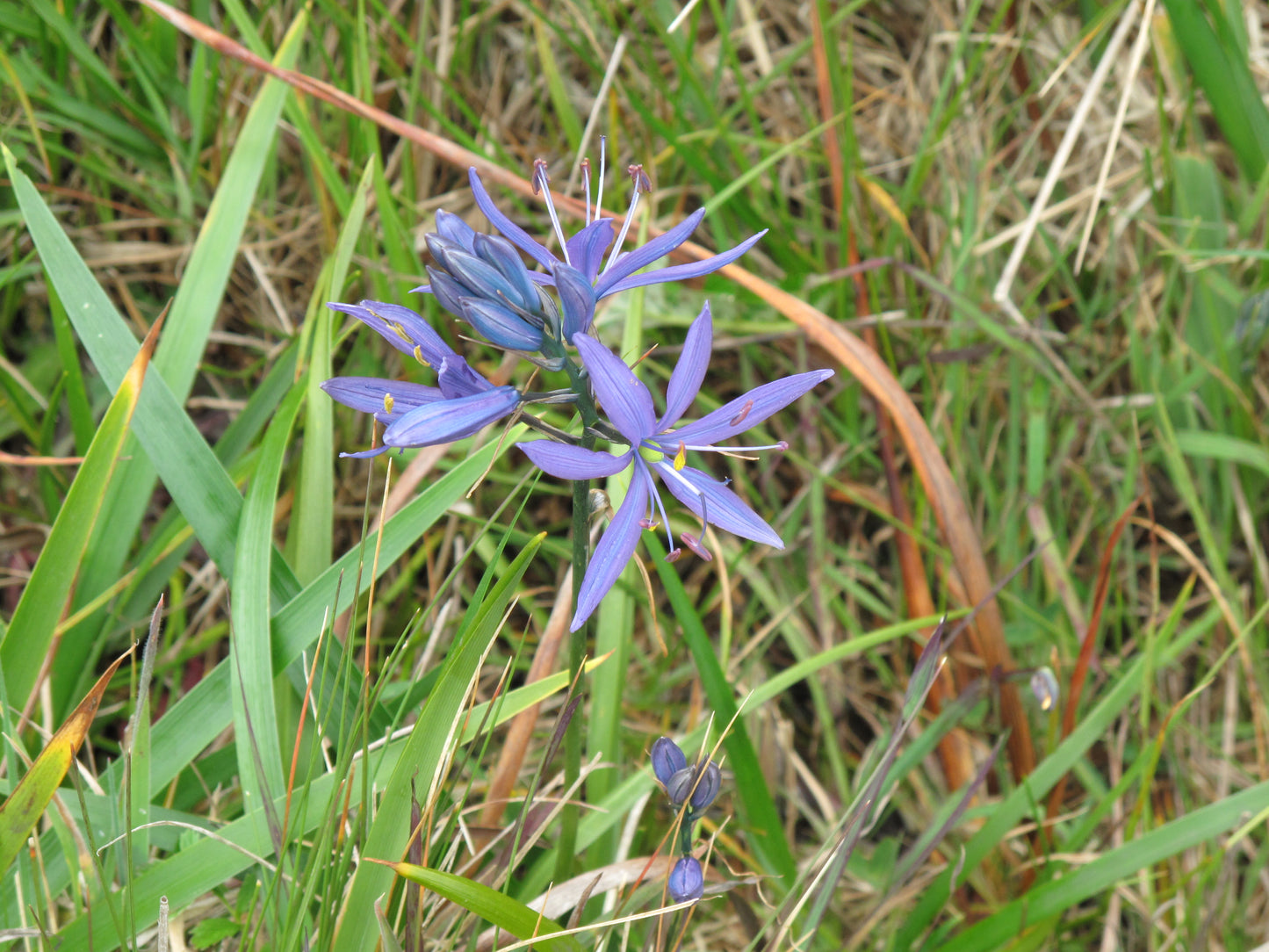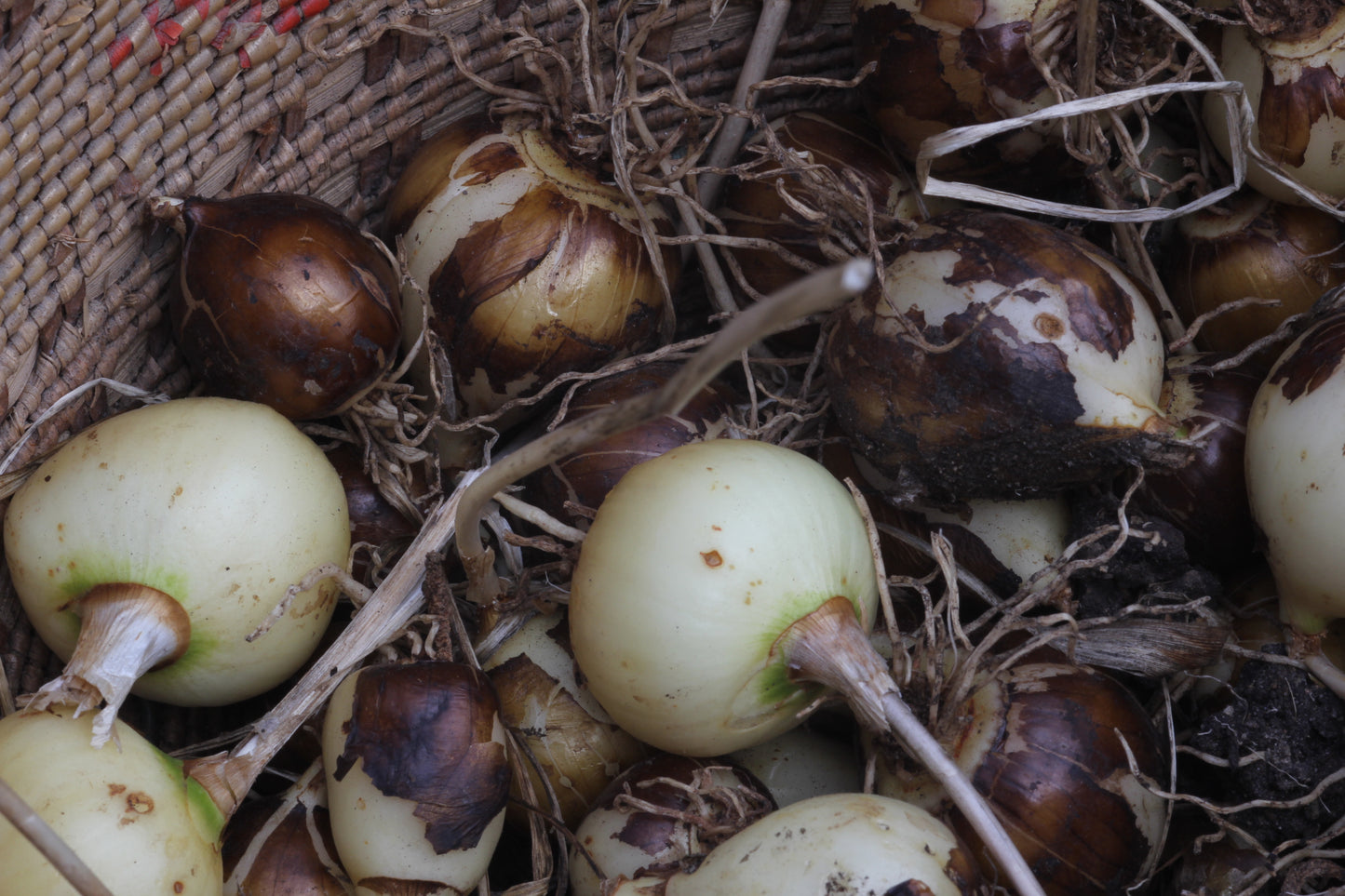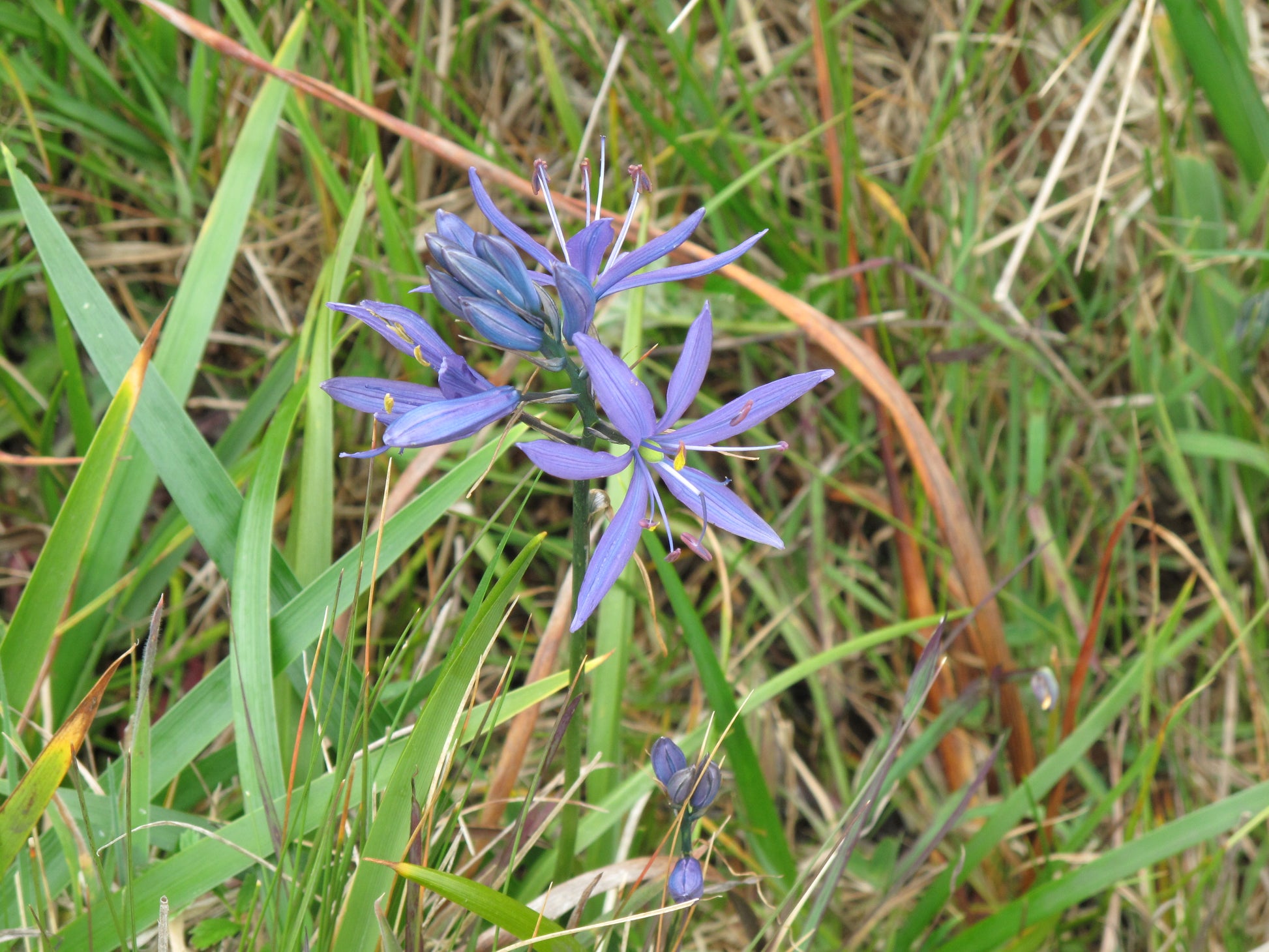Camassia quamash, "Common" Camas- Bulbs
Camassia quamash, "Common" Camas- Bulbs
Couldn't load pickup availability
Probably one of the most well-known native root foods throughout the West, Blue Camas turns fields and prairies to a sea of striking blue-purple flowers from April to June. However, despite the moniker "Common Camas", this is one of the most extraordinary species of wildflower and native food source (and unfortunately has become less and less common to find in the wild since urbanization).
The bulb from which it grows is one of the largest of the group of geophytes called "Indian Potatoes." It can be grown, harvested, and eaten in a somewhat similar manner to other Indian potatoes, though it requires significantly longer processing.
Camas likes to grow in moist situations that dry out in the summer, including creek banks, vernal pools, depressions, and the edges of marshes. It is adaptable to many soils and grows in full sun to part shade. Found throughout much of the West, its importance to native peoples is well-documented. First mentioned by Merriweather Lewis of the Lewis & Clark Expedition, it is easy to grow as long as it is protected from gophers and other burrowing munchers. We use homemade wire cages.
It is fascinating to become acquainted in your garden with such a historically and ecologically significant species. We were surprised to find out that even though we haven't yet seen them growing in the wild in Marin County, they are native here.
They can be grown in containers at least 2' deep. Plant 3 to 6" deep, in the fall, and 2-5 inches apart.
A packet contains 6 bulbs, enough to get your camas pots going.
Cooking tips: Camas contains an indigestible substance called inulin, which converts to fructose after long-cooking. Try boiling in water for one hour, then cooking in a slow-cooker in a steamer, with water up to the bottom of the bulbs for 5 hours. When it caramelizes, it becomes sweet, and was even used as a sweetener.
Orders are accompanied by a Fact Sheet: "Notes on California Camas", which includes more cooking information.




